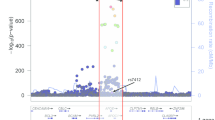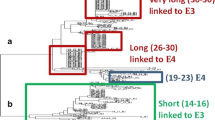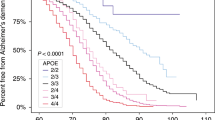ABSTRACT
Apolipoprotein E (APOE) polymorphisms are associated with variable risk and age of onset distributions for the common form of Alzheimer disease. Clinical genetic applications of APOE genotyping differ from those of family-specific mutations because the APOE genotypes are universally distributed in all populations, with ethnic and racial variations in relative allele frequencies. The association of a common disease affecting millions of people with genetic risk factors provides a new paradigm for understanding disease pathogenesis and an opportunity to focus on relevant genetic mechanisms. Clinical applications of APOE genotype information are based on epidemiological principles, rather than family-specific genetic counseling. At the present time it is not possible to predict when or if any individual will develop AD. Likewise, no APOE genotype provides escape from risk. However, an impending ethical and social dilemma is on the near horizon. When additional susceptibility polymorphisms are found, for example within a recently reported linkage to a chromosome 12 region, disease prediction may be possible for millions of unaffected individuals at a time when preventive therapies are not yet available. This impeding capability should be a wake-up call for anticipating social, ethical, and legal problems. It differs from the current model of family specific mutations because, rather than affecting a relatively small population at risk, millions of people will be capable of receiving favorable or unfavorable prognostic information. The association of common polymorphisms with complex diseases finds its first example in APOE and AD. Just as the linkage search for other susceptibility genes can be modelled after AD, the medical, ethical, social, and legal implications of this paradigm can serve as a template for other complex disease loci being actively sought by industry and in academic laboratories.
Similar content being viewed by others
Author information
Authors and Affiliations
Additional information
Received January 16, 1997; Revised and Accepted February 12, 1997
Rights and permissions
About this article
Cite this article
Roses, A. A model for susceptibility polymorphisms for complex diseases: apolipoprotein E and Alzheimer disease. Neurogenetics 1, 3–11 (1997). https://doi.org/10.1007/s100480050001
Issue Date:
DOI: https://doi.org/10.1007/s100480050001




